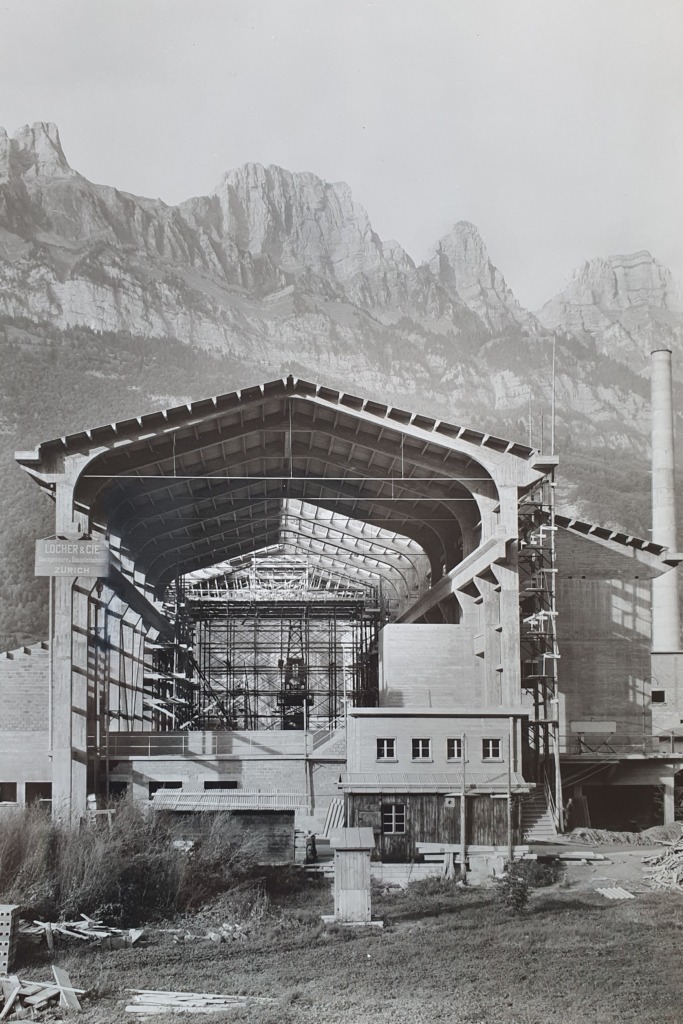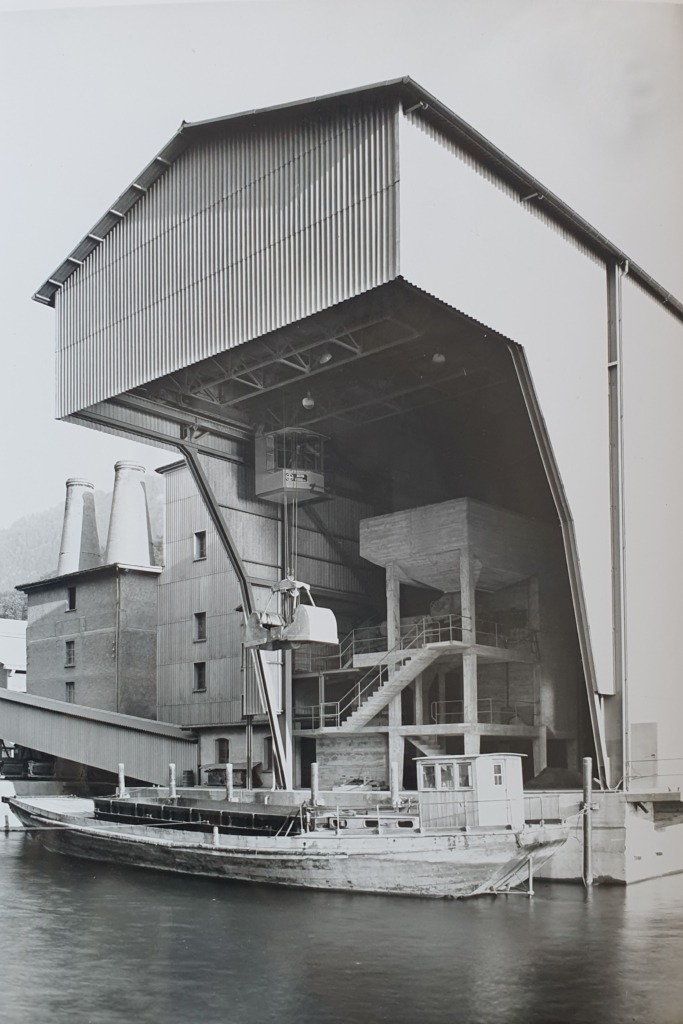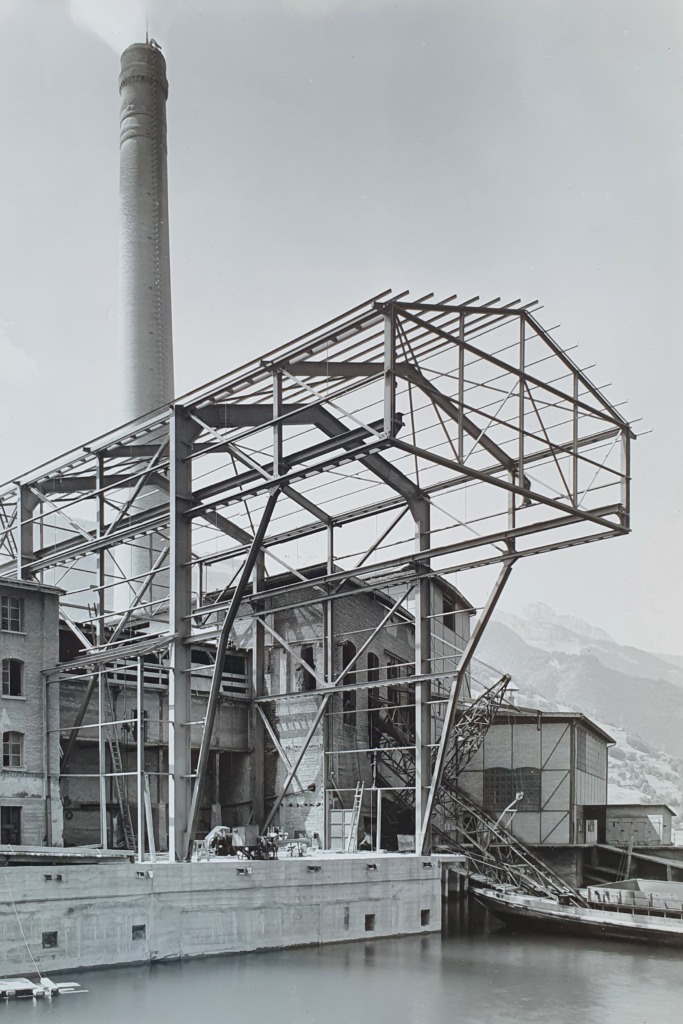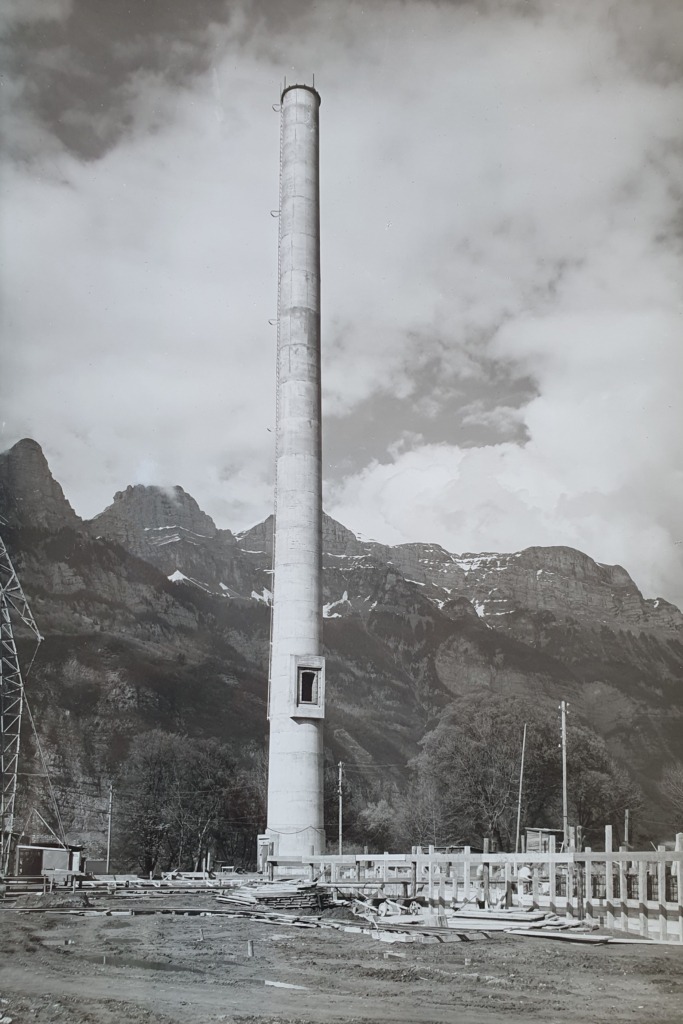Insight into the history
The current location of Marina Walensee was not so long ago the site of Cement- und Kalkfabrik Unterterzen AG. For many years, the company created numerous jobs for the local population. The “Zementi”, as it was also known, was an important part of the industrial history of the neighbouring lake.
CKU was owned by the Schmidheiny family in Heerbrugg for decades and was also the most important and largest employer and taxpayer in the municipality of Quarten for decades. In the 1930s in particular, CKU was a highly sought-after employer. At that time, many workers still travelled on foot from Oberterzen, Mols and Murg for normal and shift work. The CKU mainly employed local people. At the beginning of the 1980s, the first guest workers were hired as seasonal labourers.
The raw material for the production of cement was transported to Unterterzen from two locations. The coarse stones from the Lochezen Walenstadt quarry were transported by sea from the Lochezen loading station to Unterterzen on a 300 tonne leather ship. The gravel was removed from Gäsi near Weesen. A floating dredger was stationed in Gäsi, with which many thousands of tonnes of sand were dredged, loaded onto a small leed ship (150 tonnes) and transported to Unterterzen. The ships were unloaded in the CKU harbour using a crane (bucket capacity 1.7 m3). The CKU’s location directly on the lake in Unterterzen was therefore ideal.
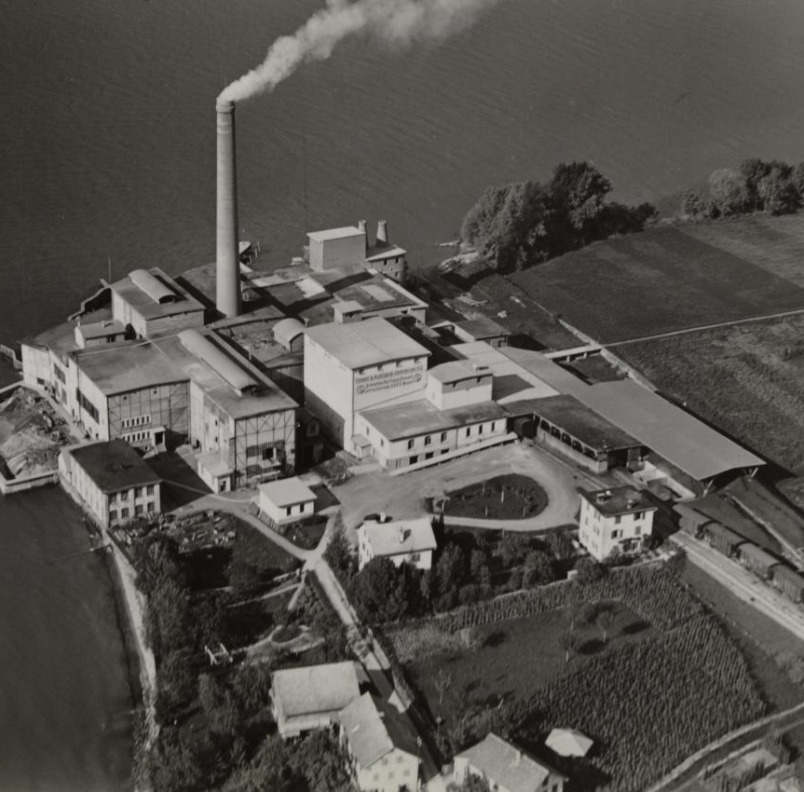
All CKU plants were powered by electricity from three company-owned power stations. CKU primarily produced cement and hydraulic lime:
Cement
Cement stones are ground – raw meal is produced. The raw meal is burnt in the rotary kiln at 1450°C – clinker is produced. The clinker is ground to produce cement.
Hydraulic lime
Limestone is fired in a shaft kiln, cooled and then ground.
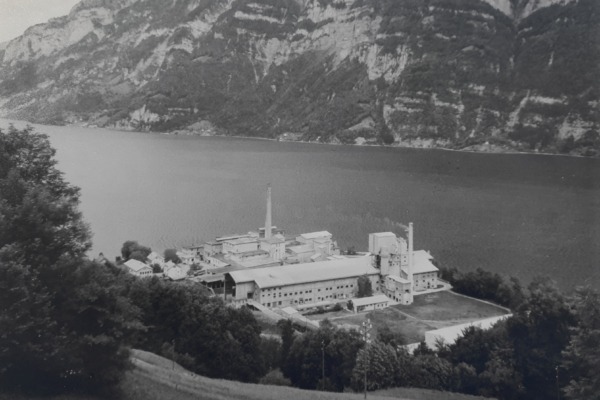
After the production of cement and lime was discontinued in 1977, the plant continued to be operated as a cement grinding plant, with the clinker (burnt raw meal) being delivered by rail from Untervaz. Customer orders, metal moulds for concrete elements and general construction work were then carried out in the workshop. In 1991, the grinding plant was also shut down and almost everything from the workshop was sold to the Bartholet company in Flums.
The entire site was then sold by the Schmidheiny family to a property company. From 2001 to 2004, the production halls, the administration building, the cement loading silo at the railway station and the residential buildings on the cement site were demolished. The demolition of the buildings and chimneys required 360 explosive charges and 43 kg of explosives.
A journey through time
- Cement and lime production from 1862
- 1991 Portland cement production is discontinued
- 1996 CKU ceases all activities in Unterterzen
- 1996 – 2001 Partial utilisation of the facilities by some tenants
- 2001 – 2004 Dismantling of the production halls, the administration building and the cement loading silo
- 2001 – 2005 Presentation of various projects and ideas Projects and ideas
- 2005 Negotiations between the landowner and project developers
developers concretise - End of 2006 Submission of the planning application
- 2007 Approval of the partial road plan, the partial zone plan and the Gosten development plan by the building department
- Apr. 2007 Start of construction of the Resort Walensee
- Dec. 2008 Opening of the Resort Walensee
- Sept. 2018 Foundation of Marina Walensee AG with regional investors & new start Marina Hotel, Marina Restaurant, Marina Hafengarten
- 2020 New marina hall built in the former swimming pool area
- 2021 Opening of the Marina Saal
- May 2022 Hosts Karin & Duri Maissen take over the management
